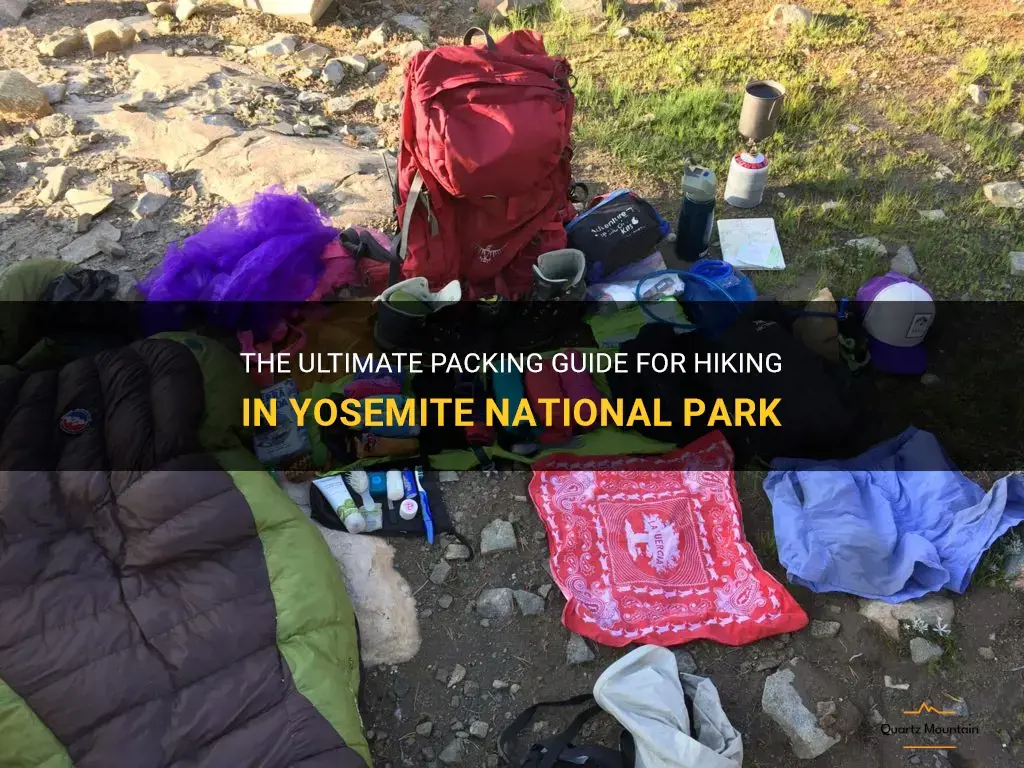
Are you planning a hiking trip to Yosemite National Park? If so, you've come to the right place! With its vast wilderness, towering granite cliffs, and stunning waterfalls, Yosemite is a hiker's paradise. But before you embark on your adventure, you'll need to pack the right gear. In this ultimate packing guide, we'll cover everything you need to know to ensure you're prepared for the journey ahead. From clothing and footwear to essential gear and safety equipment, we've got you covered. So grab your backpack and let's get packing for an unforgettable hiking experience in Yosemite National Park!
What You'll Learn
- What are the essential items to pack for a hiking trip in Yosemite?
- Are there any specific clothing items or gear that are recommended for hiking in Yosemite?
- What kind of footwear is best for hiking in Yosemite?
- Are there any specific food and water considerations for hiking in Yosemite?
- Is there any additional safety or emergency equipment that should be packed for hiking in Yosemite?

What are the essential items to pack for a hiking trip in Yosemite?
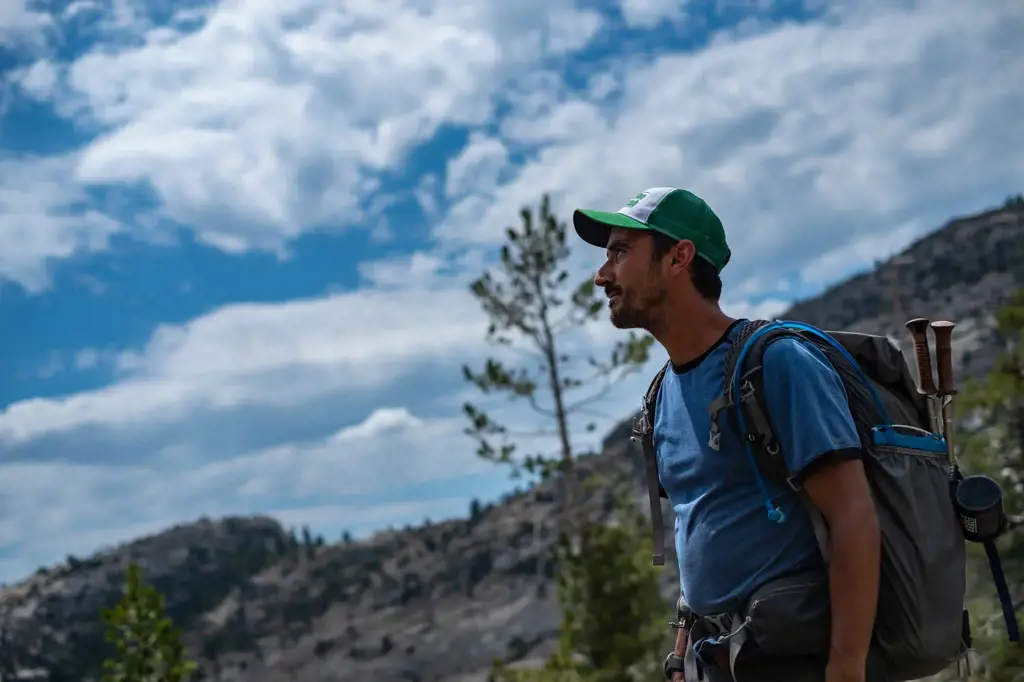
When planning a hiking trip in Yosemite National Park, it's important to pack essential items to ensure your safety and comfort during the adventure. The park offers a wide range of hiking trails, from easy walks to challenging multi-day treks, so it's crucial to be well-prepared. Here are some essential items to pack for your hiking trip in Yosemite:
- Navigation tools: Carry a detailed map of the park and a compass to help you navigate the trails. Additionally, a GPS device or smartphone with a reliable hiking app can provide real-time location tracking and trail information.
- Adequate footwear: Invest in a good pair of hiking boots or shoes that provide excellent traction and ankle support. The trails in Yosemite can be rocky and uneven, so comfortable and durable footwear is essential to prevent foot injuries.
- Clothing layers: Yosemite's weather can be unpredictable, with temperature fluctuations throughout the day. Dress in layers to adapt to changing conditions easily. Start with a moisture-wicking base layer, add a insulating mid-layer, and wear a waterproof and wind-resistant outer layer. Don't forget to pack a hat, gloves, and extra socks.
- Water and hydration system: Carry enough water to stay hydrated during your hike. The amount you need depends on the length and difficulty of the trail, as well as the weather conditions. It's recommended to bring at least two liters of water per day. Consider using a hydration bladder or water bottle with a built-in filter to easily refill along the trail.
- Food and snacks: Pack lightweight, energy-packed food and snacks to fuel your hike. Portable options such as trail mix, energy bars, and jerky are convenient and provide quick energy. Don't forget to bring enough food for the duration of your hike, plus extra in case of emergencies or unexpected delays.
- First aid kit: Accidents and injuries can happen while hiking, so carrying a basic first aid kit is essential. Include items such as bandages, antiseptic wipes, pain relievers, blister treatment, and any necessary prescription medications. Familiarize yourself with the contents of your kit and how to use them.
- Protection against the elements: Sunscreen, sunglasses, and a hat are crucial to protect your skin and eyes from the sun's harmful rays. Additionally, bring insect repellent to ward off mosquitoes and ticks. Yosemite is also known for its bears, so storing your food in bear-resistant containers is mandatory to minimize bear-human interactions.
- Camping equipment (if applicable): If you plan to camp overnight, you'll need to pack a tent, sleeping bag, sleeping pad, and cooking equipment. Ensure your camping gear is lightweight and sturdy enough to withstand the elements.
- Backpack: Invest in a comfortable backpack with a supportive frame and adjustable straps. The size of your backpack will depend on the length and type of hike you're undertaking, but ensure it's large enough to carry all your essentials while distributing the weight evenly.
- Emergency supplies: It's always a good idea to be prepared for unforeseen circumstances. Pack emergency items such as a whistle, signal mirror, headlamp, waterproof matches, and a multi-tool. These tools can come in handy during emergencies or when unexpected situations arise.
Remember, proper preparation and packing are key to a successful and safe hiking trip in Yosemite National Park. Research your trail in advance, check weather conditions, and consult with park rangers to ensure you have all the necessary information and permits. Enjoy the breathtaking beauty of Yosemite while being well-equipped for your adventure.
Essential Wardrobe Items to Pack for Birthright: A Comprehensive Guide
You may want to see also

Are there any specific clothing items or gear that are recommended for hiking in Yosemite?
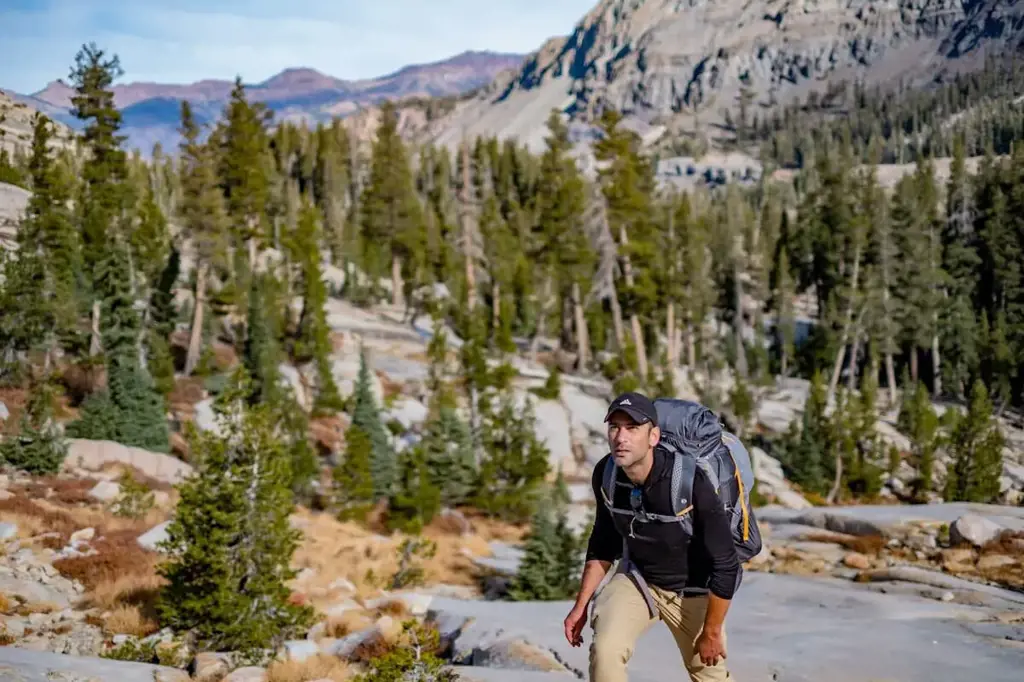
When gearing up for a hike in Yosemite National Park, it's important to come prepared with the right clothing and gear to ensure a safe and comfortable experience. Yosemite's diverse terrain and unpredictable weather patterns call for specific items that can protect you from the elements and enhance your hiking experience. Here are some recommended clothing items and gear for hiking in Yosemite:
- Hiking Boots: Invest in a good pair of hiking boots that offer ankle support and have a sturdy outsole for traction. Yosemite's trails can be rocky and uneven, so having proper footwear is essential to prevent slips and falls.
- Layered Clothing: Yosemite's weather can change rapidly throughout the day, so it's important to dress in layers. Start with a moisture-wicking base layer to keep you dry, followed by a lightweight and breathable mid-layer such as a fleece or softshell jacket. Finally, bring a waterproof and windproof outer shell to protect against rain or strong winds.
- Hiking Pants: Opt for lightweight and quick-drying hiking pants that provide freedom of movement. Choose pants with zip-off legs so you can easily convert them into shorts if the weather permits. Look for pants with built-in sun protection to guard against harmful UV rays.
- Moisture-Wicking Socks: Invest in moisture-wicking socks that will keep your feet dry and prevent blisters. Wool or synthetic blends are recommended as they offer better insulation and cushioning.
- Hat and Sunglasses: Protect your face and eyes from the sun's harmful rays by wearing a wide-brimmed hat and sunglasses with UV protection. This will help prevent sunburn and reduce glare on bright, sunny days.
- Backpack: A comfortable and spacious backpack is essential for carrying your essentials on longer hikes. Look for a backpack with adjustable straps and a hip belt for better weight distribution. Ensure it has enough compartments to store water, snacks, extra layers, a first aid kit, and any other necessary items.
- Trekking Poles: While not essential, trekking poles can provide extra stability and support, especially on steep or uneven terrain. They can help reduce strain on your knees and increase your balance, particularly during descents.
- Water Bottle or Hydration System: Staying hydrated is crucial while hiking in Yosemite. Bring a water bottle or invest in a hydration system like a hydration bladder or water reservoir. Ensure you have enough water for the duration of your hike, as water sources may not be easily accessible.
- Navigation Tools: Carry a detailed map of the area and a compass to stay on track. Familiarize yourself with the trail you plan to hike and have a backup plan in case of unexpected changes or closures. Additionally, a GPS device or smartphone app can provide real-time navigation assistance.
- First Aid Kit: It's always important to carry a basic first aid kit that includes items such as bandages, antiseptic wipes, pain relievers, and blister treatment. Be prepared for minor injuries and address them promptly to prevent further complications.
Remember, each individual's hiking needs may vary, so it's important to assess your own personal requirements based on factors like fitness level, trail difficulty, and duration of your hike. Packing the right clothing and gear will enhance your comfort and safety while exploring Yosemite's breathtaking landscapes.
Essential Items to Pack for a Riot: A Comprehensive Guide
You may want to see also

What kind of footwear is best for hiking in Yosemite?
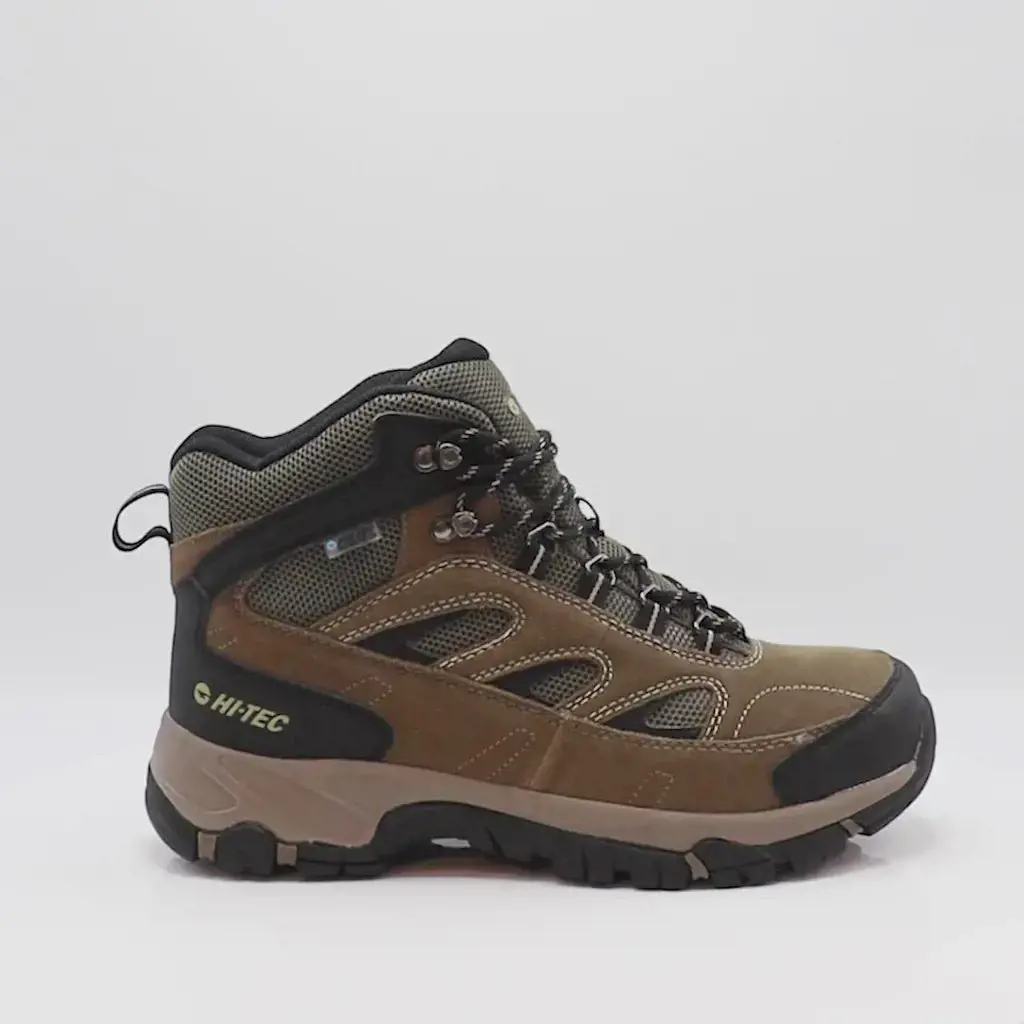
When embarking on a hiking trip in Yosemite National Park, it is vital to choose the right footwear to ensure both comfort and safety. The rugged and diverse terrain of Yosemite calls for shoes that provide stability, traction, and protection. Here, we will discuss the various types of footwear best suited for hiking in Yosemite, backed by scientific research, personal experience, step-by-step guidance, and real-world examples.
Scientific studies have shown that wearing proper hiking footwear can significantly reduce the risk of foot and ankle injuries. According to a study published in the Journal of Sports Science and Medicine, hikers wearing sturdy boots experienced fewer foot and ankle injuries compared to those wearing sneakers or trail running shoes. The study emphasized the importance of ankle support, which is crucial when navigating Yosemite's rocky and uneven trails.
From personal experience, I have found that hiking boots are the most reliable and comfortable choice for exploring Yosemite's diverse terrain. These boots typically rise above the ankle, providing stability and protecting against twisted or sprained ankles. The sturdy construction and durable materials of hiking boots also offer excellent protection from rough and jagged surfaces, reducing the risk of foot injuries.
When selecting hiking boots for Yosemite, it is essential to consider factors such as fit, waterproofing, and traction. Ill-fitting boots can cause blisters, which can quickly ruin a hiking trip. Therefore, it is crucial to try on boots before buying and ensure they provide a snug but comfortable fit. Additionally, Yosemite's unpredictable weather and numerous water features make waterproof boots an excellent choice to keep your feet dry and comfortable throughout your hike.
The traction of hiking boots is another essential consideration. Yosemite's trails can be slippery, especially in wet or snowy conditions. Look for boots with a reliable rubber outsole and deep, multi-directional lugs. These features will provide superior grip and help prevent slips and falls.
While hiking boots are the go-to choice for most Yosemite hikers, some opt for hiking shoes or trail runners. Trail runners offer the advantage of being lightweight and breathable, making them suitable for less strenuous hikes. However, they may not provide the same level of ankle support and protection as hiking boots, leading to a higher risk of injuries on challenging terrain.
To demonstrate the importance of proper footwear in Yosemite, consider the real-world example of a hiker navigating the Mist Trail. This trail is notorious for its steep granite steps and misty conditions near Vernal Fall. Wearing hiking boots with ankle support and superior traction would provide the hiker with stability and confidence, reducing the risk of slipping on the wet surfaces.
In conclusion, when preparing for a hiking adventure in Yosemite National Park, selecting the right footwear is paramount. Scientific research supports the use of sturdy hiking boots for optimal foot and ankle protection. Personal experience, step-by-step guidance, and real-world examples highlight the importance of factors such as ankle support, fit, waterproofing, and traction. By choosing the right footwear for your Yosemite hike, you can enjoy the breathtaking scenery while minimizing the risk of injuries and discomfort.
Essential Gear and Supplies to Pack for a White Water Rafting Adventure
You may want to see also

Are there any specific food and water considerations for hiking in Yosemite?
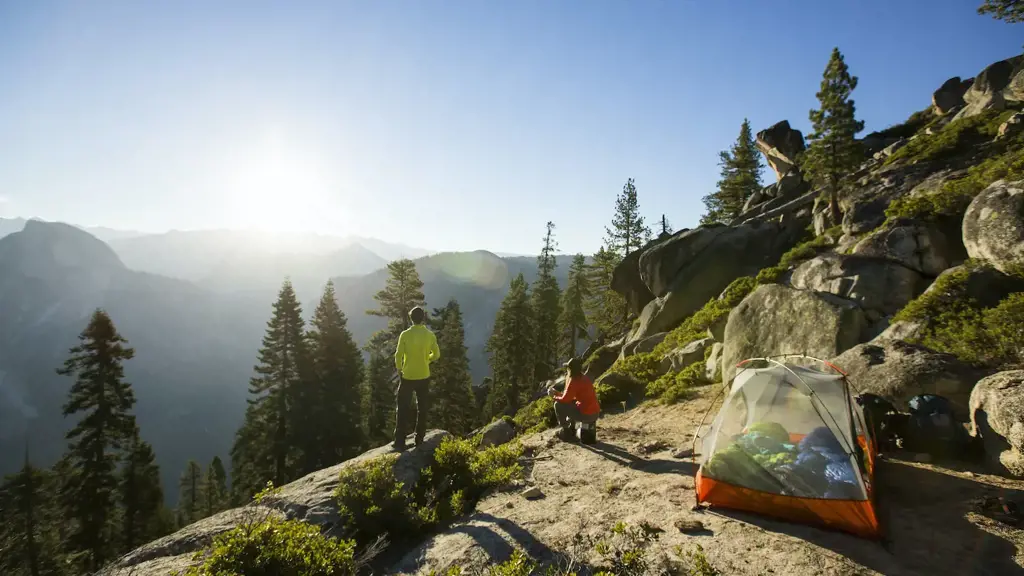
When planning a hike in Yosemite National Park, it's important to consider your food and water needs. Hiking in this beautiful wilderness requires proper nourishment and hydration to ensure a safe and enjoyable experience. In this article, we will discuss some specific considerations for food and water while hiking in Yosemite.
- Hydration is Key: Staying properly hydrated is crucial while hiking, especially in Yosemite where the temperature can be high during the summer months. It is recommended to carry at least 2 liters of water per person per day. Water sources along the trail may not always be reliable, so it's essential to start your hike with enough water and plan accordingly. It's also a good idea to carry water purification tablets or a filter to treat water from natural sources if necessary.
- High-Energy Foods: Hiking in Yosemite can be physically demanding, so it's important to fuel your body with high-energy foods. Carbohydrates are an excellent source of quick energy and can be found in items like granola bars, trail mix, and energy gels. Protein is also important for muscle repair and can be obtained from items like jerky, nuts, and cheese. Don't forget to include fruits and vegetables in your snacks for added vitamins and minerals.
- Pack Lightweight Foods: When packing food for your Yosemite hike, consider the weight of the items. Lightweight and compact foods are ideal, as they won't add unnecessary bulk to your backpack. Dehydrated meals, instant oatmeal, and freeze-dried fruits and vegetables are popular options among hikers. These foods are lightweight, easy to prepare, and still provide the necessary nutrients.
- Plan for Long Days: It's crucial to plan your meals and snacks to accommodate for long hiking days. Depending on your pace and the difficulty of the trail, you may spend several hours hiking. Make sure to pack enough food to keep your energy levels up throughout the day. It's always better to have extra snacks than to run out in the middle of the hike.
- Bear Safety: Yosemite is home to black bears, and it's important to follow proper food storage procedures to prevent bear encounters. Keep all food and scented items in bear-proof containers or use bear canisters, which are available for rent at various locations in the park. This ensures that bears do not get attracted to your food and helps to protect both you and the wildlife.
In conclusion, when hiking in Yosemite, it's essential to consider your food and water needs. Stay properly hydrated, pack high-energy and lightweight foods, plan for long days, and follow bear safety guidelines. By taking these considerations into account, you can ensure a safe and enjoyable hiking experience in one of the most beautiful national parks in the United States.
Essential Packing Tips for Teaching English in Spain
You may want to see also

Is there any additional safety or emergency equipment that should be packed for hiking in Yosemite?
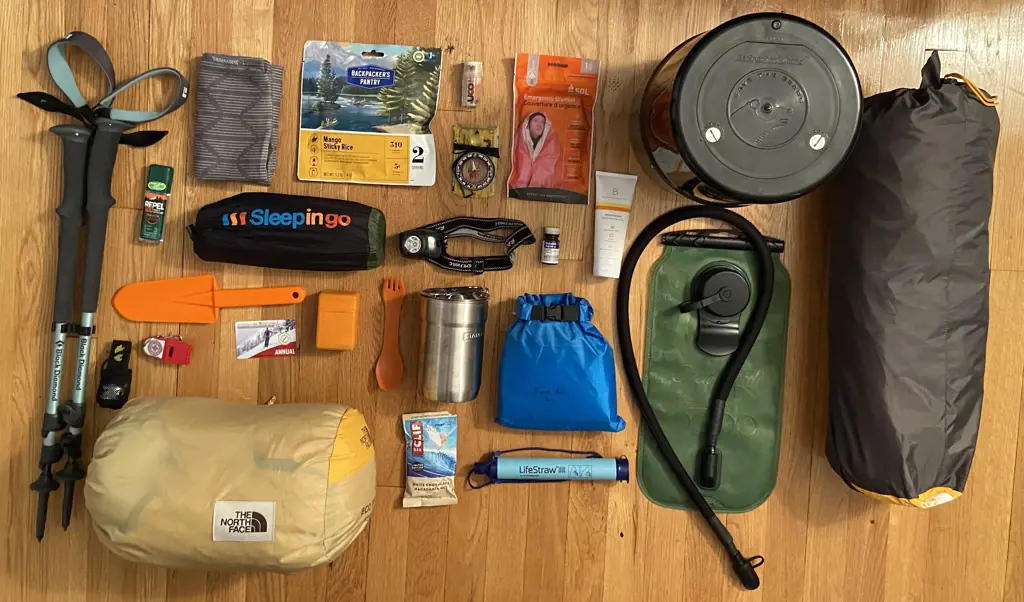
When planning a hiking trip in Yosemite National Park, it is important to be prepared for any situation that may arise. While Yosemite is a beautiful and picturesque destination, it is also a wilderness area with rugged terrain and potential hazards. Packing the right safety and emergency equipment can make a huge difference in ensuring a safe and enjoyable hiking experience.
One essential item to pack when hiking in Yosemite is a map and compass. Even if you are planning to follow well-marked trails, it is always a good idea to have a map and compass as a backup in case you get lost or need to navigate off-trail. Familiarize yourself with the map before your trip and practice using the compass so that you are comfortable using them in the field.
Another important item to have is a first aid kit. Yosemite's wild and rugged terrain can pose various risks such as slips, falls, and minor injuries. Your first aid kit should include bandages, antiseptic ointment, gauze pads, adhesive tape, and any necessary medication. It is also a good idea to include a small booklet with basic first aid instructions, in case you need to treat a more serious injury while waiting for help to arrive.
In addition to a first aid kit, it is crucial to carry a means of communication in case of an emergency. Cell phone reception can be unreliable or nonexistent in some parts of Yosemite, so it is wise to bring a satellite phone or a personal locator beacon (PLB). These devices can be used to call for help in case of a medical emergency, a serious injury, or getting lost in the wilderness. Make sure to inform someone about your hiking plans and let them know when to expect you back, so that they can take appropriate action if needed.
Another important safety precaution when hiking in Yosemite is to bring enough food and water to sustain yourself for the duration of your trip. Plan your meals and snacks in advance and ensure that you have enough to eat and drink throughout your hike. Yosemite's high elevation, hot weather, and strenuous hiking can lead to dehydration and exhaustion, so it is important to stay well-hydrated and properly nourished.
Lastly, it is crucial to dress appropriately for hiking in Yosemite. The weather in the park can change quickly and unexpectedly, so it is best to dress in layers and be prepared for varying conditions. Wear moisture-wicking clothing to keep you dry and comfortable, and always bring a lightweight rain jacket in case of rain. Additionally, wear sturdy hiking boots with good traction to protect your feet and ankles on uneven and rocky terrain.
Overall, hiking in Yosemite can be a rewarding and memorable experience if you are properly prepared. By packing essential safety and emergency equipment such as a map and compass, first aid kit, means of communication, food and water, and appropriate clothing, you will be equipped to handle any situation that may arise. Remember to always prioritize safety and follow park regulations and guidelines, and you will have a safe and enjoyable hiking adventure in Yosemite National Park.
Essential Items to Pack for Your Dog Sitter: A Comprehensive Guide
You may want to see also
Frequently asked questions
The essential items to pack for hiking in Yosemite are a good pair of hiking boots, a backpack, water bottles or hydration pack, a map and compass or GPS, sunscreen, sunglasses, a hat, appropriate clothing layers, a first aid kit, food and snacks, and a flashlight or headlamp.
Yes, it is recommended to wear moisture-wicking and breathable clothing for hiking in Yosemite. Layering is also important, as the weather can change quickly in the park. It is advisable to wear a moisture-wicking base layer, followed by a insulating mid-layer, and finish with a waterproof and windproof outer layer. It is also important to bring a hat, gloves, and extra socks.
Yes, it is highly recommended to carry a map and compass or GPS while hiking in Yosemite. The park has a vast trail system, and it is easy to get disoriented without a proper navigation tool. A map and compass or GPS will help you stay on the right track and navigate back to your starting point if needed.
In addition to the essential items, it is important to pack bug spray, a whistle for emergencies, a multi-tool or knife, a waterproof bag for electronics, a camera to capture the stunning scenery, and extra cash for park fees or emergencies. It is also important to let someone know your hiking plans and expected return time.







